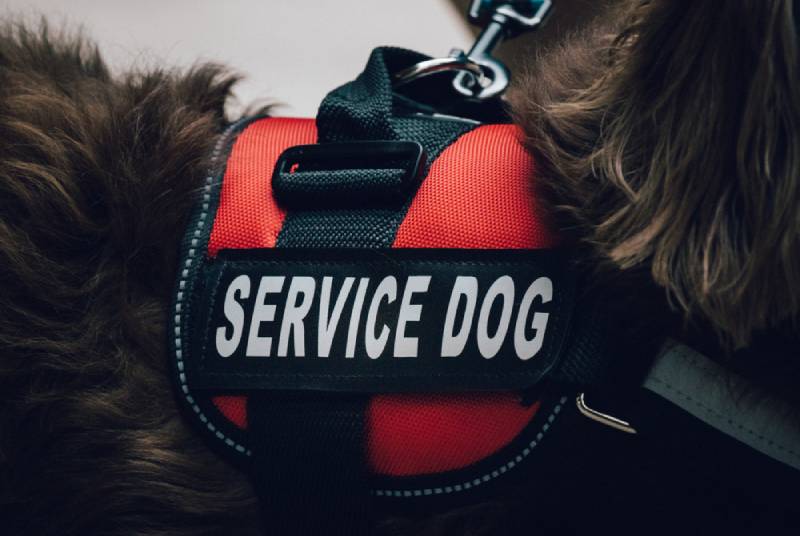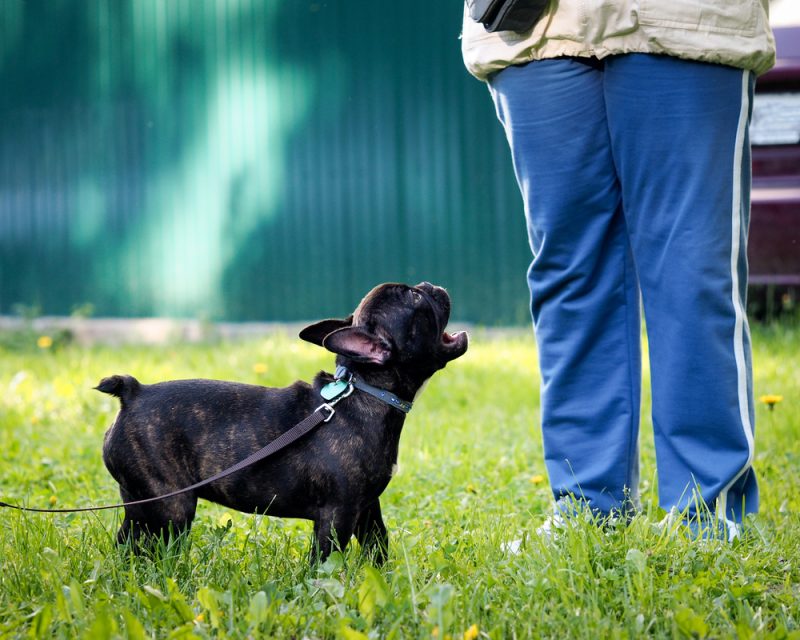In this article
There are many different kinds of service dogs out there, but did you know that there are service dogs that have been specifically trained to help people who suffer from seizures? These intelligent and highly trained canines can detect when their person is about to have a seizure, and spring into action to assist them in several different ways.
They are life-saving and life-changing companions for many people, and the way they go about it is mind-boggling in so many different ways! Let’s learn a bit more about these marvelous dogs.

How Does It Work?
While dogs are said to be ‘man’s best friend’, the truth is that they see and experience the world in a completely different way to us. One of the most notable differences is their sense of smell, and it’s this sense that comes in handy for seizure dogs.
It is said that human seizures are associated with our odor, which these dogs can detect with their superior olfactory senses, allowing them to spring into action before their owner even realizes what’s happening. From there, years of training kick in, allowing the service dog to complete tasks specifically tailored to that individual’s needs.
Not all seizure service dogs can actually detect and warn of an oncoming seizure, but they are all trained to know what to do when one starts. Dogs that are able to pick up on changes that suggest a seizure is on its way will exhibit behaviors like barking, whining, or circling which can alert the human of it. These kinds of behaviors have been known to happen seconds to 45 minutes before an oncoming seizure, but it is not a guaranteed action. However, seizure dogs are very much capable of assisting humans during and after seizures. That leads us to discussing the two types of seizure dogs.
What Are the Different Types of Seizure Dogs?
There are two types of service dogs for seizures: seizure alert dogs and seizure response dogs. To put it simply, seizure alert dogs are dogs that are naturally able to detect oncoming seizures. Again, they cannot be trained to do this, but those that can, are able to be trained to do it whenever they detect a seizure approaching.On the other hand, seizure response dogs are those that have no or limited ability to detect an oncoming seizure, but are trained to perform certain behaviors in response to one. Seizure alert dogs are usually also trained in seizure response.
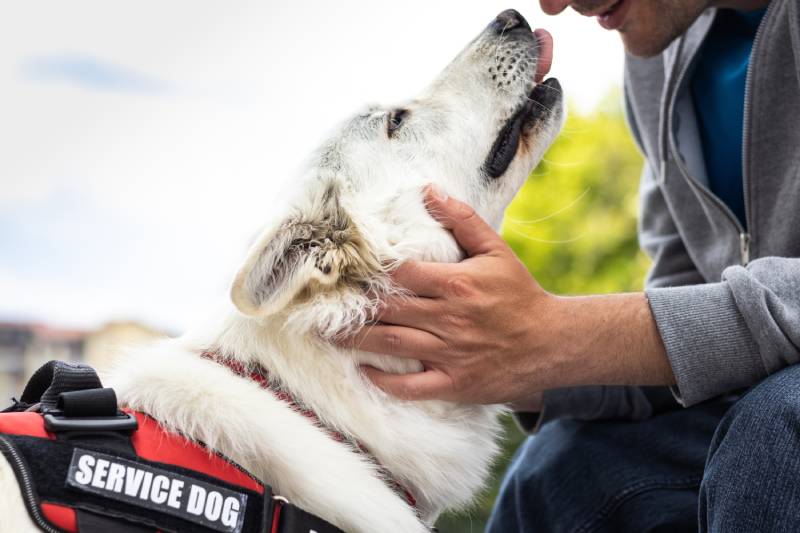
Where Is It Used?
Seizure service dogs are incredibly useful to people who have epilepsy or other seizure disorders. However, while most people with these conditions could benefit from a service dog, they’re incredibly expensive, and there simply aren’t enough to go around. It takes hundreds of hours, as well as the time spent finding and breeding the right dogs for the role, in order to train these service dogs, and sometimes at the end of all that training, there may be reasons why an individual dog is unable to fulfill their role.
There are a number of different agencies across the country that work tirelessly on training and pairing dogs with people, but unfortunately, there will always be more people in need of this type of service animal than there are dogs to fill the role.
Advantages of Service Dogs for Seizures
There are numerous advantages of service dogs for people who have seizures. These service dogs can respond to a seizure in multiple ways, and the way they respond depends on what the individual needs and how the dog has been trained.
Some dogs bark to alert families when the individual has a seizure, ensuring they can get the help they need even if the person is in another room. Other ways these pups can respond and help include:
- Lying next to, or on top of the individual having a seizure to help prevent injury
- Physically moving the person if they seize in a place that isn’t safe
- Standing next to their owners to break their fall
- Pressing alarm buttons or other pre-programmed devices
- Offering mobility assistance, like pulling wheelchairs and helping their owners walk
- Seeking assistance if the seizure happens away from home
Disadvantages of Service Dogs for Seizures
Dogs that help people with seizures don’t have many direct disadvantages, but they do have quite a few when it comes to having access to one. First, they’re extremely expensive, and insurance often won’t cover or offset the cost.
Not only that, but they can take a long time to train, and each dog will only complete certain tasks for their owner. Finally, service dogs are animals, and as they age, they might be less effective at their tasks. If they pass away, it leaves the owner needing to find a new service dog that can meet their needs.
Obviously, if you don’t like dogs or are allergic, a service dog is not for you!
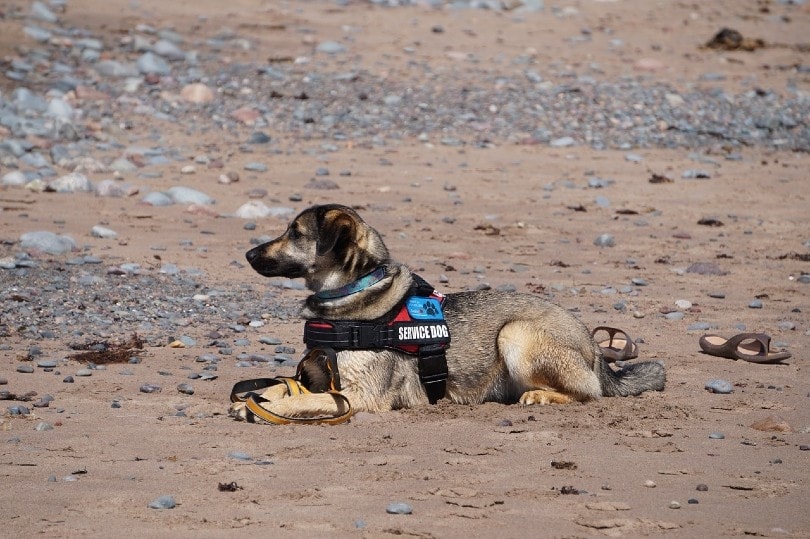

Frequently Asked Questions (FAQ)
How Do Dogs Sense Seizures?
While it was once a mystery how dogs could sense seizures, recent studies have peeled back the curtain a bit. Scientists believe that dogs can sense an odor their owner emits seconds to minutes before they start seizing.
How Do You Qualify for a Seizure Dog?
Each organization will set its own guidelines for qualifying for a seizure dog, but common guidelines center around the frequency of the seizures, the age of the individual, if they have the right environment and support system to care for a dog.
What Breed of Dog Is Best for Seizures?
Different breeds excel at different tasks, and while there are no set guidelines for eliminating certain breeds from this type of work, some breeds are more common than others. Common service dogs for seizures are Golden Retrievers, Labrador Retrievers, Poodles, Goldendoodles, and German Shepherds.
Generally speaking, a larger dog is better suited for this type of work as they are more able to move or restrain a person if needed, as well as reach doors or alarms. However, small dogs that are able to detect seizures can still play a vital alert role.
How Much Is a Seizure Dog?
Service dogs require a lot of training, and all this training takes time and effort by professionals. All this adds up to a seizure dog typically costing between $15,000 and $30,000, and it’s not unheard of for these pups to cost as much as $50,000.
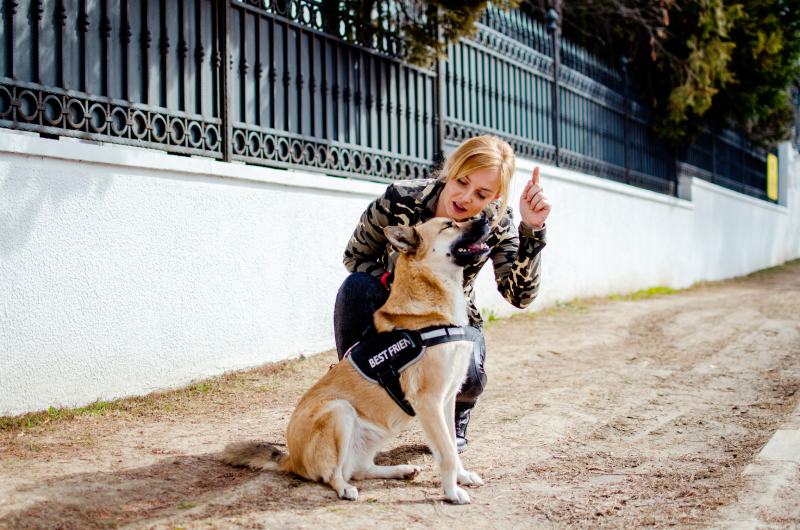
Can I Train My Own Seizure Dog?
To a certain extent, yes. If you or a family member suffers from seizures, you may have already noticed if your dog seems to behave differently before an episode. If this is the case, rewarding that behavior when it happens may help to encourage your dog to continue with their alerting role.
Just like training a dog to sit, roll over, or stay, you can train your dog to respond to certain movements or situations by repetition and positive reinforcement. There are also a number of organizations that can train your dog to become a seizure alert dog, or provide guidance on how to train them yourself.

Final Thoughts
It’s easy to see how seizure dogs can dramatically change someone’s life for the better. They can assist in all sorts of situations, and they can give someone a sense of normalcy.
Remember, if you see a service dog when you’re out and about, leave them alone. They’re working and transforming someone’s quality of life, even if you can’t see it! But if you encounter a service dog on their own, they may be trying to get help for their person, so you should follow them if it is safe to do so.
Featured Image Credit: SR Productions, Shutterstock

